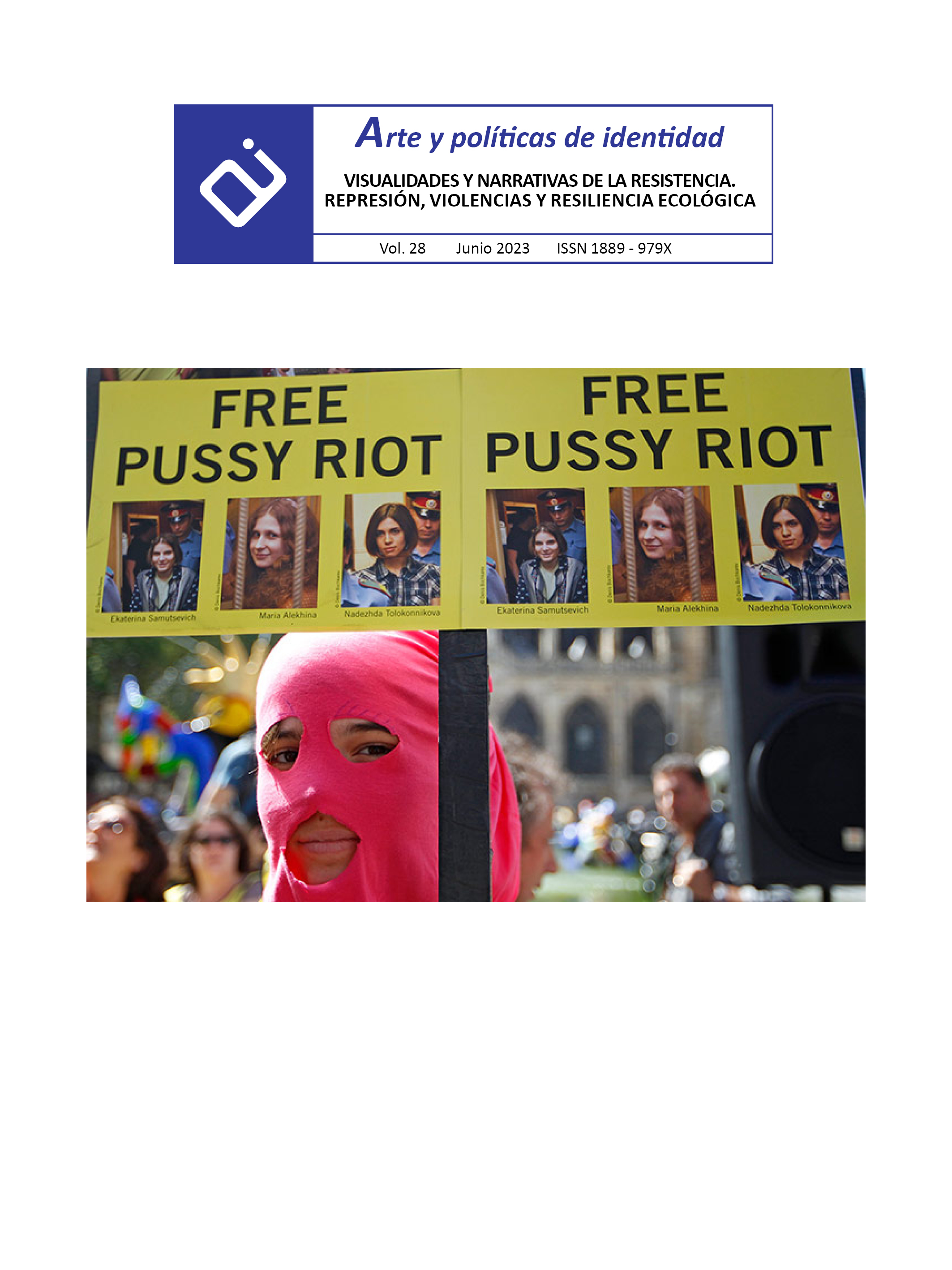The media shelter: Intimate spaces turned into scenic, the image of a period of resilience
Abstract
In a mass media world like ours, it is increasingly difficult to define the line between the other and the self. Human beings are inherently social, because the search for oneself begins on that impersonal basis provided by the gaze of others. But group feedback is not enough to acquire an identity; we also need moments of disconnection from the group to connect with ourselves, which in a hyper-connected society is a big problem, as two of the greatest human needs are brought to the fore; the need to be loved and part of a group. Social networks create new spaces for socialization, where we found a refuge during those quarantines caused by Covid-19. During a time of isolation, we had no choice but to turn our homes into other public locations. Life, in front of others, has always been a big theater. However, we bring the scenario into our homes, and we may possess countless virtual identities created as a result of cyber-performances. These concepts are reflected in contemporary artistic creation, starting from the changes caused by globalization until today, which is why we will use different examples, from photography, painting or performance, to contextualize these facts.
Downloads
-
Abstract274
-
pdf (Español (España))346
References
Bard, G. y Magallanes, M. (2021). Instagram: La búsqueda de la felicidad desde la autopromoción de la imagen. Culturales, 9, e519. https://doi.org/10.22234/recu.20210901.e519
Centre d’Arts Contemporànies. (2 de diciembre de 2010). A través del espejo, Joan Fontcuberta. ACVIC. https://tinyurl.com/yt4sbdt5
Collado, S. (9 de febrero de 2013). Cuando Joan Fontcuberta reflexiona de Reflectogramas y llega a la duda y el humor. El Diario. https://bit.ly/46gxHnt
Delgado, R. y Falleti, V. (2021). Casas tomadas. Habitabilidad, comunidad y espacios públicos en tiempos de pandemia. Política y Cultura, 56, 107-129. https://tinyurl.com/3y5nsyhz
Di Piego, A. (2005). Lo social y lo público en la obra de Hannah Arendt: Reconsideraciones sobre una relación problemática. Intersticios, 10(22-23), 39-69. https://bit.ly/3pcP1ci
Elorduy, I. (16 de marzo de 2019). La fotografía es un gesto que tenemos los humanos para detener el tiempo. El Correo. https://tinyurl.com/43fpvsph
Fontcuberta, J. (2010). A través del espejo. ACVIC, Centro de Arte Contemporáneo. https://bit.ly/46e0Q2j
Gao J, Zheng P, Jia Y, Chen H, Mao Y, Chen S, et al. (2020). Mental health problems and social media exposure during COVID-19 outbreak. PLoS ONE, 15(4), e0231924. https://doi.org/10.1371/journal.pone.0231924
Goffman, E. (1956). La presentación de la persona en la vida cotidiana. Amorrortu.
Infante, F. (2021). Estética y fenomenología de la pose. Investigaciones Fenomenológicas, 16, 85-108. https://doi.org/10.5944/rif.16.2019.29677
Manovich, L. (2019). The Aesthetic Society: Instagram as a Life Form. Autopublicación bajo CC License. https://tinyurl.com/52kxupwz
Martínez, P. (2021). Covid Photo Diaries Activism in the visual communication of the Covid-19 pandemic. Revista Internacional de Cultura Visual, 8(2), 179-190. https://doi.org/10.37467/gkarevvisual.v8.2934
Martín-Prada, J. (2018). El ver y las imágenes en el tiempo de Internet. Akal.
Moreno, S. (2019). La estilización del yo en redes sociales: la proyección online de la identidad personal como artificio semiótico. DeSignis, 30. 77-89. https://tinyurl.com/3yppjs2m
Negredo, S., Amoedo, A., Vara, A., Moreno, E. y Kaufmann, J. (2020). Gobiernos, políticos y redes sociales, principales responsables del auge de los bulos. Digital News Report.es 2020. https://tinyurl.com/x6c6mzwd
Observatorio de Milán. (4 de febrero de 2022). Rope Play. Fondazione Prada. https://tinyurl.com/aks925yn
Pérez-Escoda, A., Barón-Dulce, G. y Rubio-Romero, J. (2021). Mapeo del consumo de medios en los jóvenes: redes sociales, ‘fakes news’ y confianza en tiempos de pandemia. Index.comunicación, 11(2), 187-208. https://doi.org/10.33732/ixc/11/02Mapeod
Peute, M. y Rus, A. (2021). Displays of Vanity on Instagram: A Reflection on the Making of Instaworthy. Etnofoor, (33)1. 11-20. https://tinyurl.com/2p97sab7
Powers,M. (1997). How to program a virtual community. Ziff-Davis Press.
Pozo, M. A. (2022). Impacto del uso de la tecnología, redes sociales e información relacionada con COVID-19 sobre la salud mental durante la pandemia. Revisión bibliográfica. [Tesis de pregrado, Universidad Central del Ecuador, Facultad de Ciencias Médicas]. https://bit.ly/3JkQ6Fy
Rosenthal, R. y Jacobson, L. (1968). Pygmalion in the Classroom. Crown House.
We Are Social (2022). Digital Report 2022: El informe sobre las tendencias digitales, redes sociales y mobile. https://bit.ly/3pdjGpP
Zafra, R. (2015). Ojos y capital. Editorial Consonni.
Zafra, R. (2016). I like your image. Políticas de la afectividad y cultura de archivo en la red. Visualidades, 14(1). 130-149. https://doi.org/10.5216/vis.v14i1.43065
Zafra, R. (2017). Redes y posverdad. En J. Ibáñez (Ed.) En la era de la Posverdad (pp. 181-192). Calambur.
Zafra, R. (2019). La (im)posibilidad de un mundo sin párpados. Ensayo sobre la intimidad conectada. Isegoría, Revista de Filosofía Moral y Política, 60, 51-68. https://tinyurl.com/28zr8y4w
Zambrano, M. (1955). El hombre y lo divino. Alianza.
Copyright (c) 2023 Servicio de Publicaciones de la Universidad de Murcia

This work is licensed under a Creative Commons Attribution-NonCommercial-NoDerivatives 4.0 International License.
Works published in this journal are subject to the following terms:
- The Service of Publications from the University of Murcia (publishing house) keeps the published works’ copyrights, and favors and allows the reuse of these works under the license indicated in point 2.
- Works are published in the journal’s online edition under the license Creative Commons Reconocimiento-NoComercial-SinObraDerivada 3.0 España(texto legal). They can be copied, used, disseminated, transmitted and publicly exhibited, as long as: i) the author and original source of publication are cited (journal, publishing house and work’s URL); ii) they are not used for commercial purposes; iii) the existence and specifications of this license are mentioned.
3. Conditions for auto-file. It is allowed and encouraged that authors share electronically their pre-print version (the pre-reviewed version) and /or post-print version (the reviewed and accepted version) of their Works before the publication, since it promotes its circulation and dissemination. RoMEO color: green.










